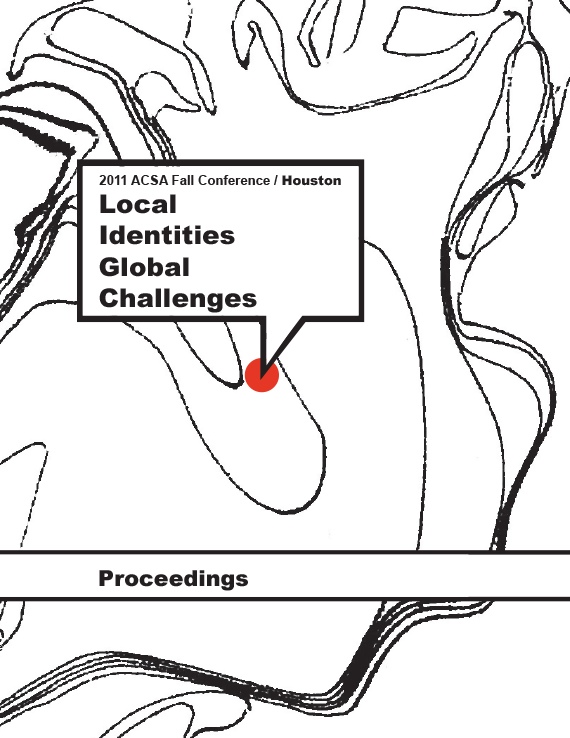Author(s): Eric Goldemberg
This project seeks to analyze the sublime character of memorials as manifestations of a Global Catastrophe in a Local Context. Memorials affect a heightened awareness of the ‘liquidity’ of time; a sense of metamorphoses of perceptual states via the celebration of rituals and propagation of faux-eidetic memory. The feedback loop between the magnitude and scale of a global catastrophe – such as a tsunami – with local contexts triggers the unconscious sensory experience of spaces for remembrance, in the landscape. This is demonstrated with the analysis of a Memorial project in Thailand. The design of this memorial for the victims of the Tsunami is infused with a positive attitude about the remembrance of life, and the absorption of death as a fundamental cyclic energy, a phenomena based on periodicity and the dialectic montage of rhythmic moods and atmospheres. The project’s three-dimensionality is resolved by adopting strategies of aggregation of courtyard-like components which produce qualitative thresholds for the perception of the body in space, reflecting the exuberant foliage and micro-ecologies of Phuket Park in Thailand. The design strategy of the memorial brings to the fore the metaphysics of presence by stressing the space of difference, the interstitial voids, the folds of the soul and the erotic sublimation of death. In 1757, Sir Edmund Burke penned what would become a famous treatise called A Philosophical Enquiry into the Origin of Our Ideas of the Sublime and Beautiful, in the tradition of Longinus and others. By the nineteenth century, the sublime had become a preoccupation of artists and writers alike, through both the European mode of the Romantic sublime and American transcendentalism, which can now be revisited using strategies of aggregation or Chunking. A memorial for the Victims of the Tsunami in Thailand represents an ideal opportunity to assess the status of local identity amidst global catastrophe in contemporary design. Memorials are machines of remembrance, operated by the fleeting polyrhythm of collective memory. Culturally and physically, the landscape is an advantageous and diverse construct, the result of multiple layers of material organization with a profound temporal dimension. The feedback loop between global and local is defined by participation and engagement with the structures of multiple architectural systems, sustaining dialectic notions of landscape. To address this view of urbanity, the design work based on the adaptation to local vicissitude basically attempts at the “construction of horizons” understood as the constant generation of connective tissue via the instrumentality of infrastructure design. This connective tissue operates at multiple scales and it is materialized with membranes to support events, separating and connecting the openness of courtyard-field organization with the transient status of memory and identity of place. The new inclusive approach of feedback between the global catastrophe and its local counterpoint entails a new synthesis for the comprehensive and seamless assemblage of construction, programme and circulation throughout the open landscape, and into the Sublime.
Volume Editors
Ikhlas Sabouni & Jorge Vanegas

 Study Architecture
Study Architecture  ProPEL
ProPEL 
